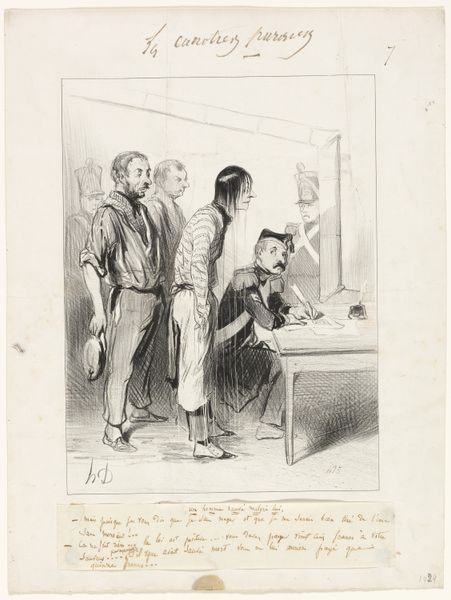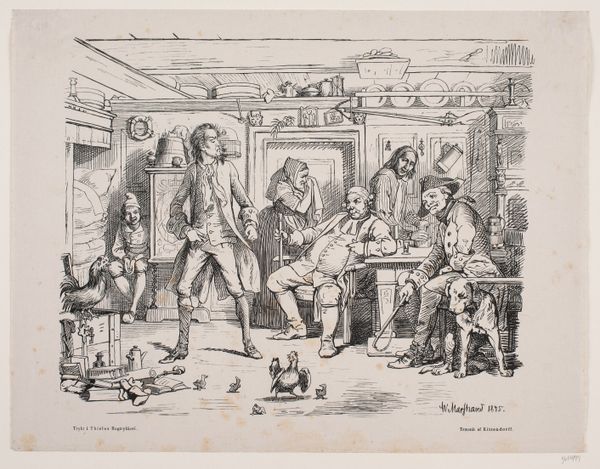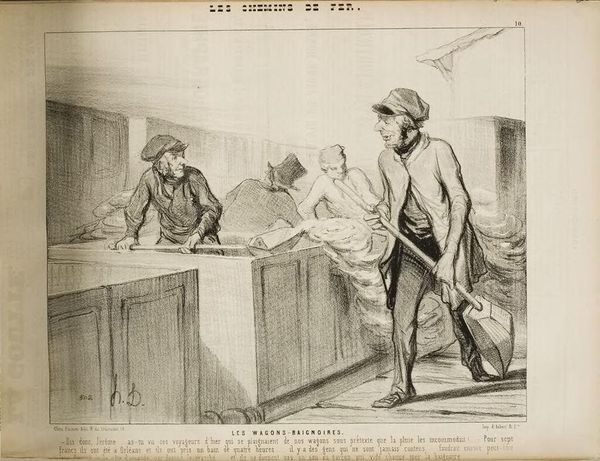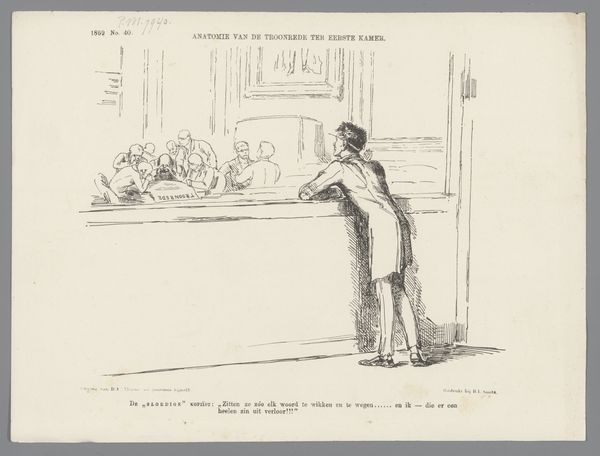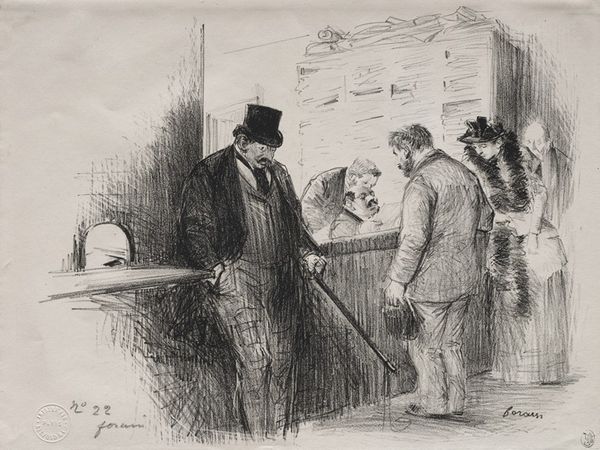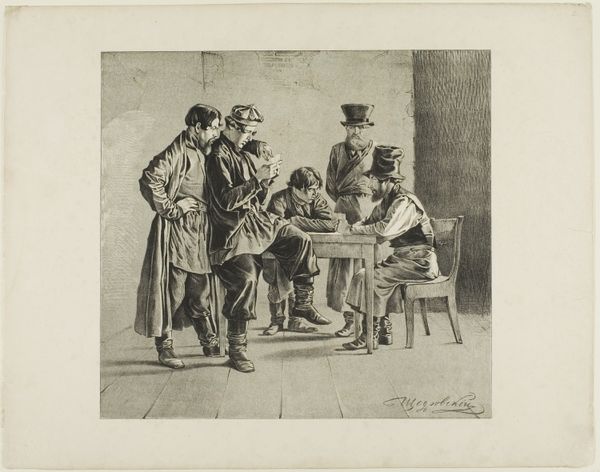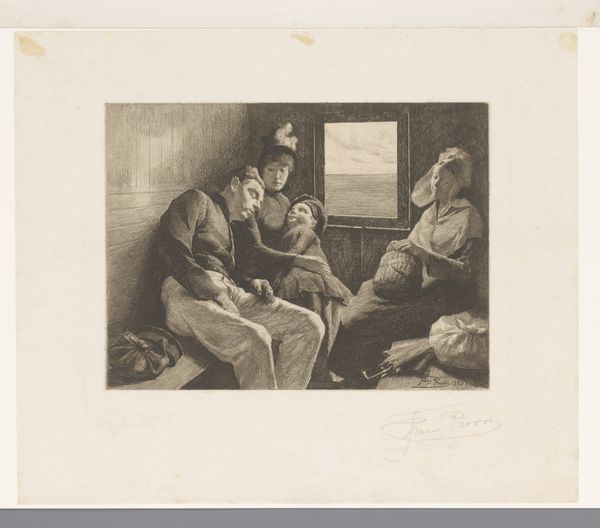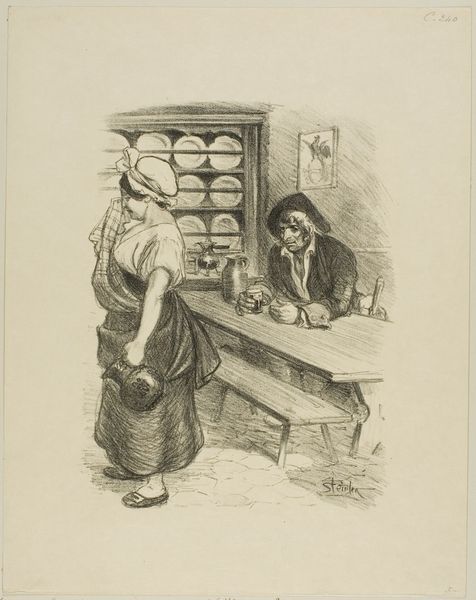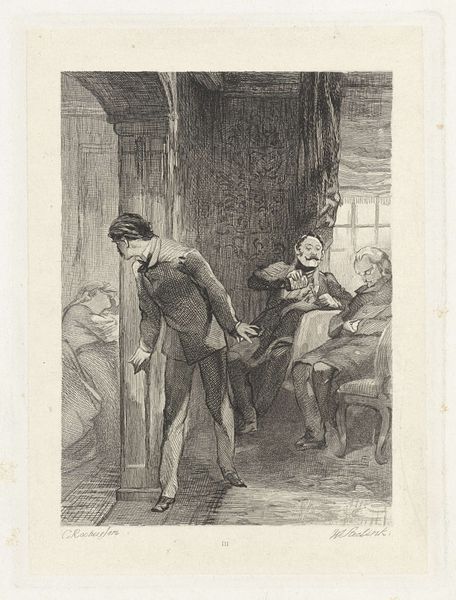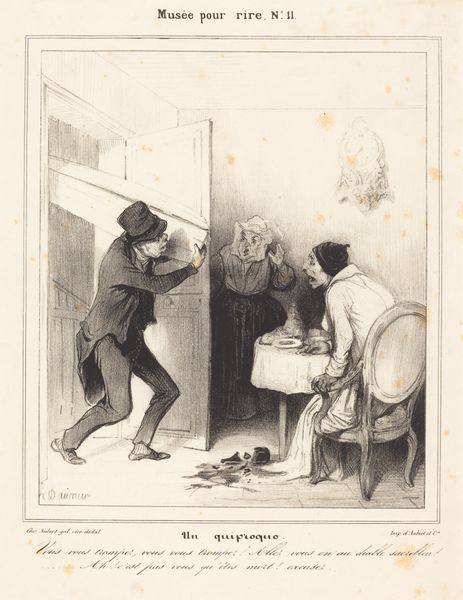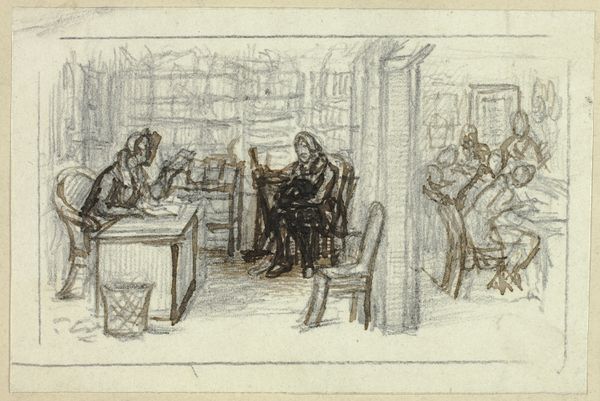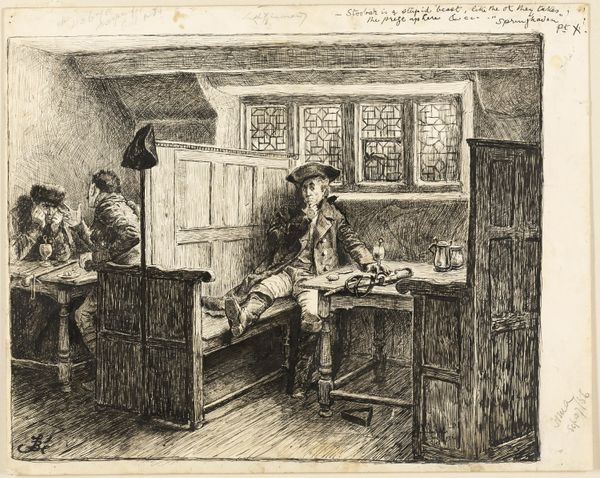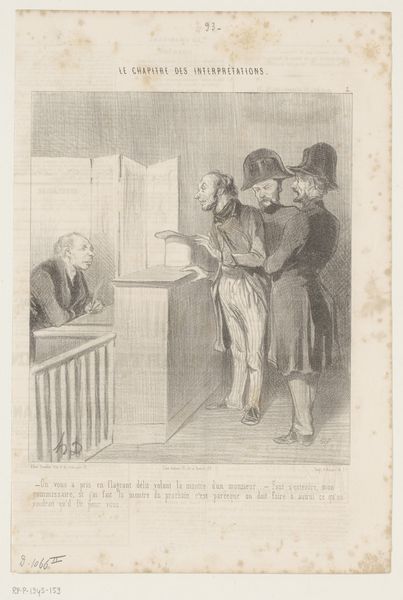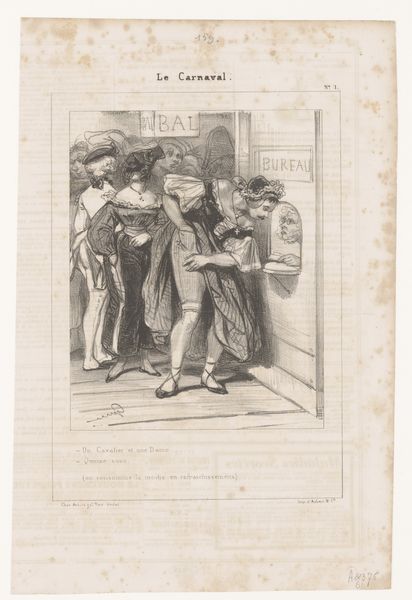
The Bath Tub Cars. “- Say, Jerome....did you see these travellers yesterday who complained about our cars under the pretext that the rain inconvenienced them? - For only 7 Francs they traveled to Orléans, including a four hour bath.... there are people who are never content! Next they will want us to serve them an almond-paté as part of the bargain... and then they don't even give a sou to the boy who cleans the bath tub,” plate 10 from Les Chemins De Fer 1843
0:00
0:00
drawing, lithograph, print, paper
#
drawing
#
lithograph
# print
#
caricature
#
paper
#
romanticism
#
france
#
genre-painting
Dimensions: 212 × 269 mm (image); 268 × 360 mm (sheet)
Copyright: Public Domain
Editor: So, here we have Honoré Daumier's lithograph from 1843, "The Bath Tub Cars." It seems to be a humorous take on early train travel, but there's also a hint of social commentary, perhaps about class differences. What stands out to you in this piece? Curator: Daumier was a master of using satire to expose the inequalities of 19th-century France. This piece isn't just funny, it's deeply critical. We see the working class literally cleaning up after the discomfort of the bourgeoisie. The "bath tub cars" become a metaphor for the exploitation inherent in this new era of industrial transportation. How does the text accompanying the image shape your understanding of that social commentary? Editor: It suggests the travelers are complaining, despite getting a "bath" for a low price, further highlighting the disconnect. They even ignore the worker cleaning the tubs! Curator: Exactly! This is Daumier drawing attention to the ignored labour that made their journey possible. He invites us to consider who benefits from progress and at what cost. The casual cruelty in their dismissal of the worker reflects a larger systemic issue. Do you see any echoes of this dynamic in our contemporary society? Editor: I think so! It reminds me of delivery drivers during the pandemic, deemed essential yet often underpaid and overworked while catering to middle class consumer habits. Curator: Precisely! And thinking about this imagery within a contemporary lens, the bath tub is, perhaps, an intersectional commentary: who has access to leisurely bathing versus those for whom cleaning such a luxury is a part of their exploitation? Daumier compels us to confront uncomfortable truths about privilege and labour then, as it is reflected in our lives now. Editor: It’s incredible how a seemingly simple caricature can reveal such profound layers of meaning. Curator: Indeed. Daumier understood that art could be a powerful tool for social change, urging us to recognize and challenge inequalities within our own communities.
Comments
No comments
Be the first to comment and join the conversation on the ultimate creative platform.
